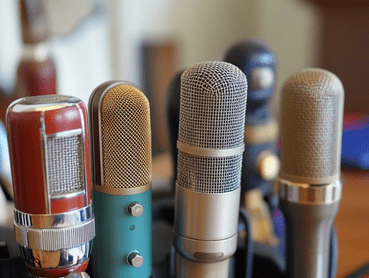Piezoelectric vs. Capacitive Microphones in Miniaturization
| Features/Characteristics | Piezoelectric Microphones | Capacitive Microphones |
|---|---|---|
| Principle of Operation | Utilize the piezoelectric effect where pressure variations in sound waves generate voltage. | Operate on the principle of variable capacitance due to sound wave-induced diaphragm movements. |
| Sensitivity to Sound Pressure | Generally less sensitive compared to capacitive; requires higher sound pressure to produce output. | Highly sensitive, capable of capturing subtle nuances in sound due to lower mechanical mass of diaphragm. |
| Frequency Response | Broader frequency range often with a peak response at higher frequencies. | Flatter frequency response across a wide range, ideal for accurate sound reproduction. |
| Noise Performance | Higher noise levels due to mechanical stress and material properties. | Lower inherent noise, better signal-to-noise ratio due to electronic signal processing capabilities. |
| Size and Scalability | Can be extremely small and robust, suitable for harsh environments. | Miniaturization has made significant advances, with MEMS technology enabling very small sizes. |
| Power Consumption | Generally lower power consumption as they do not require external polarization voltage. | Requires external bias voltage, leading to slightly higher power consumption. |
| Environmental Stability | Highly stable in varying temperatures and humidity levels, less prone to environmental distortions. | Sensitive to environmental changes like humidity and temperature, which may affect performance. |
| Manufacturing Complexity | Less complex to manufacture, leading to potentially lower costs. | More complex manufacturing process due to the need for precision in diaphragm and electrode spacing. |
| Application Suitability | Preferred in high-vibration environments, industrial applications, and where robustness is crucial. | Favored in high-fidelity recording, smartphones, hearing aids where clarity and sound quality are paramount. |
| Cost Considerations | Generally cheaper due to simpler construction and less stringent material requirements. | Often more expensive due to precision manufacturing and material costs. |
| Signal Processing | Typically requires additional signal conditioning to manage the raw piezoelectric output. | Advanced signal processing capabilities, often integrated with digital signal processing hardware. |
| Durability and Maintenance | High durability with minimal maintenance needs. | Requires careful handling and maintenance to ensure performance due to sensitive components. |
| Research and Development Trends | Ongoing research into new piezoelectric materials that could enhance performance and reduce costs. | Constant innovations in MEMS technology, aiming to improve performance and reduce size further. |
| Future Potential | Promising developments in material science could expand applications in more fields. | Expected to dominate markets requiring precise audio input due to continuous improvements in MEMS design. |
Piezoelectric and capacitive microphones, when miniaturized, serve distinct niches based on their intrinsic properties. Piezoelectric models are robust and suited for environments where durability is essential, while capacitive microphones provide superior audio fidelity, making them ideal for consumer electronics and sensitive recording applications. The choice between the two depends heavily on the specific application requirements and environmental conditions.

